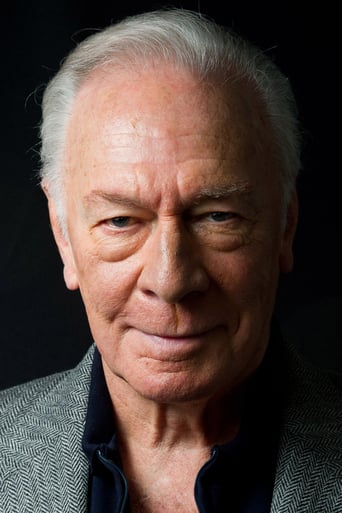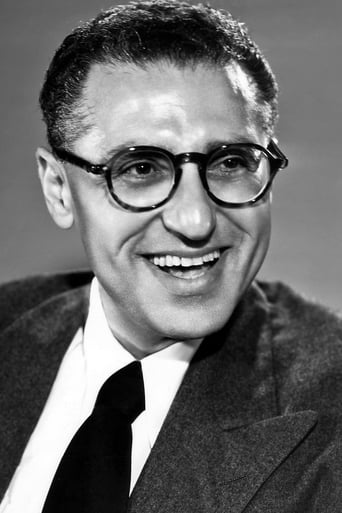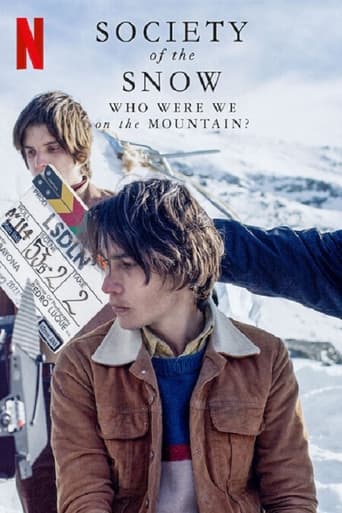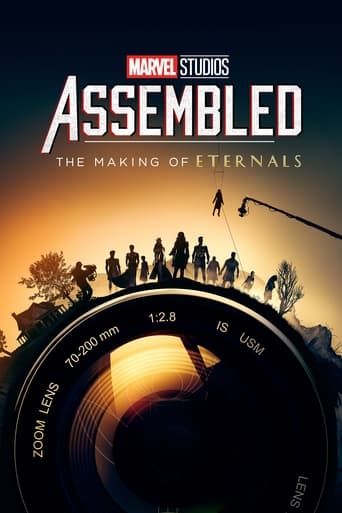Unlimitedia
Sick Product of a Sick System
CrawlerChunky
In truth, there is barely enough story here to make a film.
PiraBit
if their story seems completely bonkers, almost like a feverish work of fiction, you ain't heard nothing yet.
Anoushka Slater
While it doesn't offer any answers, it both thrills and makes you think.
FloatingOpera7
The Making Of A Legend: Gone With The Wind (1989): Starring the narrator Christopher Plummer, the voices of L. Jeffrey Selznick, Arthur E. Arling, Katherine Brown, Arthur Fellows, Ann Rutherford, Evelyn Keyes, Butterfly McQueen, Raymond A. Klune, James E. Newcom, Marcella Rabwin, Harry L. Wolf and the Archive Footage of Margaret Mitchell, David O. Selznick, Vivien Leigh, Clark Gable, Olivia De Havilland, Leslie Howard, Hattie McDaniel, Oscar Polk, Carole Lombard, Paulette Goddard, Susan Hayward, Jean Arthur, Tallulah Bankhead, Joan Bennett, George Cukor, Victor Fleming......Director David Hinton.This is director David Hinton's magnificent 1989 documentary about the making of the 1939 Oscar winning epic "Gone With The Wind", still considered by many to be the greatest film of the 20th century. Hinton's documentary first aired on PBS/KCET around 1990 and is now a bonus feature in the new Gone With The Wind 4-disc DVD Collector's Edition. This is a long, wonderfully detailed documentary that takes the viewers back to late 30's Hollywood for a step-by-step look at the making of this beloved American movie classic. For the most devote "Wind" fan, this is a huge treat. Veteran actor Christopher Plummer (The Sound of Music) provides the narration and Max Steiner's enchanting score for the film plays in the background. The film was the product of ambitious director David O. Selznick, who bought the rights from Atlanta author Margaret Mitchell, whose Pulitzer prize winning novel had sold millions. We see into the lives of the prominent forces behind the film- Selznick, Mitchell, the principal actors, namely Vivien Leigh and Clark Gable, as well as the buzz around the film. Selznick pulled one of the greatest publicity stunts of the time. He had cast Hollywood newcomer Vivien Leigh as Scarlett but still continued to deceive the public into thinking the perfect Scarlett had not yet been found. Because Scarlett O'Hara was the most coveted movie role for an actress in the late 30's, several brand name and no-name actresses were considered for the role and auditioned, including top choices Bette Davis (who received her second Oscar for the '38 film "Jezebel" in a similar role to Scarlett), Paulette Goddard who was chummy with the director, Katherine Hepburn, Southern-born Tallulah Bankhead, Miriam Hopkins (who had performed the Broadway play Jezebel) Joan Bennett, Susan Hayward, Lana Turner, Jean Arthur, even Lucille Ball. We watch as Vivien Leigh and her soon-to-be husband Laurence Olivier journey from England to Hollywood, hoping to land the role she was born to play. We watch as production is besieged with several problems including the chaotic use of three different-minded directors (Cukor, Wood and Fleming), difficulties with actors and directors including Gable's clash with Cukor, censorship and Hay's Code problems with Gable's infamous use of the word "damn" in the final scene and faulty, early Technicolor process. Finally, after two long years of filming, "The Wind" sweeps Atlanta for its December premiere in the grandest spectacle the town had ever seen, never mind the onset of World War II just around the corner. It swept the Oscars in 1940, earning Selznick, Leigh and Hattie McDaniel their Oscars. Selznick would never make a greater film. His tomb reads "Director of Gone With The Wind". We see interviews with actresses Evelyn Keyes and Ann Rutherford (Suellen and Careen, Scarlett's sisters) and Butterfly McQueen (Prissy) who was still alive to comment on the film but who would die tragically in 1995. We watch as the film remains popular years afterward and when the remaining cast attends the 1961 Civil War Centennial and we learn about the tragic deaths of Leslie Howard, Clark Gable and Margaret Mitchell. America would see re-releases of the movie throughout the years, even well into the late 90's. This documentary strips the romantic glamor of the film to reveal it was just as difficult to make as any expensive film then and now. But the documentary honors the great film as a work of art, a film that will be loved for years to come. Gone With The Wind fans will cherish this priceless documentary. It is a film that represented the zenith of old Hollywood movie-making, a film based on a great American novel which still captures the imagination of modern-day audiences. Return to Tara with Vivien Leigh and Clark Gable, watch as we learn how Atlanta fell in a studio back lot which was once the set of "King Kong", watch as an obscure English girl reaches film immortality, watch the first black actress win her Oscar, learn the cold facts about the movie, look behind the scenes to discover beauty born out of madness and mayhem and watch as a legendary movie comes to glorious life. Enjoy!!
jotix100
David O. Selznik, one of the most successful producers in the Hollywood of the 1930s, probably never considered what he was getting into, when he decided to bring Margaret Mitchell's massive novel, "Gone with the Wind", to the movies. The monumental task to recreate the book, which was a favorite among the American public of the era, was not an easy, or a happy undertaking by Mr. Selznik, or the people that were involved in the project.David Hinton's documentary, which was shown by TCM recently, is a gem of a film because it gives a fantastic account of all that went on to make the film. "Gone with the Wind" stories have been told forever, or so it seems, yet, in the documentary they are examined thoroughly again by a lot of Mr. Selznik's collaborators who were still around in 1989 to tell the story.The best thing in "Making of a Legend: Gone with the Wind" is the footage where many stars were tested for the leading roles. The characters of the book were coveted by most of the actors of the time because they realized the importance about appearing in it would mean to their careers. We see actors of the stature of Jean Arthur, Joan Bennett, Tallulah Bankhead, among the ones that wanted to contribute to the movie, yet, they were not chosen.David O. Selznik comes across as a disorganized genius who had no idea about what he was doing. His memos to the cast and crew were something not to be believed. Some people resented this way of communication. His battle with George Cukor is also told and how Victor Fleming, who by all accounts was not the perfect candidate, came to be the one that was able to complete the picture.There are some excellent comments, especially from Ann Rutherford and Evelyn Keyes, who explain what they saw while the film was in production. Some others also come on to tell us their view about what the film changed their lives and the experience of having worked with a mad man who was so intent in getting the movie done. It's a good thing this film was done during the 1930s because it would probably had cost more than 200 million in today's dollars! Thanks to director David Hinton this epic movie is examined and put in its proper context to help the viewer understand the way Hollywood worked during the time it decided to convert the book into a movie.
style-2
Everything you ever wanted to know about *GWTW* -- from Margaret Mitchell recalling her mother driving her out to see the ruined plantations around Atlanta, and telling her that she'd better learn to survive, to its historic status as being one of the most beloved movies of all time – even when it's not politically correct to love the movie. It is a documentary combining spoken word, letters, memos, newsclips, diaries and recreations – in a comprehensive style that predates Ken Burns by quite a bit. It is a dizzying montage of information and images that tells the story of the film – a monumental achievement that is one of the few films to not disappoint the lovers of the book. Selznick purchased the rights to the story for $50,000 – a fortune at the time, for a story so sprawling that it was impossible to visualize on the screen. As a superb craftsman, even Selznick was intimidated – not just by the scope of the story, but by the public's obsession with it. So it is with tender care that he began preproduction and scriptwriting on this sacred monster. The footage that we see in the finished version of *GWTW* shows only a small part of the passion, heartache and bloodletting that went on behind the scenes. Most impressive is the existing array of screen tests that were done for the movie – evidence that the much-ballyhooed Search for Scarlett O'Hara was far more than hype from a hotheaded publicist. Showing dozens of would-be Scarletts, Melanies, Ashleys and Belles, the most stunning footage is the multiple and lengthy tests that Paulette Goddard did for the role of Scarlett. She exhibits a cunning and slyness that is perfect for Scarlett, and the newsreports go crazy announcing her unconfirmed appointment. It is the sheer numbers of tests that Goddard did the continually amazing, and she had every reason on earth to believe she had the part. It's easy to see that she would have been delightful as Scarlett, but could she have made Scarlett into the legend that Vivian Leigh did? Fraught with tension, shooting began without Scarlett having been cast. The story behind the filming of the burning of Atlanta is riveting in its detail, showing how old sets from *King Kong* and *Birth of a Nation*, among others, were burned and then multiplied on film to create the effect. It was during the filming of this sequence that Selznick's brother, Myron, legendarily arrived on the set with a gorgeous young woman in tow and said to the producer, "I'd like you to meet your Scarlett." And the film's fate was sealed with the casting of the tragic and incandescent Vivian Leigh. Though Selznick was reviled by Hedda Hopper, among others, for casting an English girl, instead of a red-blooded American, even Margaret Mitchell herself said, "Better and English girl than a Yankee." Goddard had been frontrunner up to the last second when Leigh waltzed in and stole the part from under her nose. It must have been an unbearably bitter disappointment, and Goddard never again realized the potential she showed in these tests. But, it is also only a small facet of what happened behind the scenes. After a time, miles of film were scrapped when original director George Cukor was fired and replaced by Victor Fleming. There's quite a tale behind *that* that neither the documentary, nor we, will go into. The personal dramas are many, with Selznick's drug use, health problems and subsequent breakdown being addressed. The volume of information collected is awesome. From Butterfly McQueen speaking about her role as Prissy ("I wouldn't let them slap me, but I thought Prissy needed to be slapped…I thought she was horrid."), to the footage of Hattie MacDaniel's Academy Award speech that is so sincere and touching that it must be considered a gift that we can still see it. It was a scandal that the movie cost $3,000,000 to make: a jaw-droppingly small figure for a movie that paid for itself many, many times over – and *that's* just in financial terms.
ross robinson
Gone With The Wind is a story you'll never forget. The documentry about Gone With The Wind was excellent because it explains in detail about the movie, how it was all set out and how long it took to take to decide who would take the main parts in it. It must have been very difficult for the people who made this movie to make up their minds of who shall be the best person to play and to take part in Gone With the Wind. I think it all started in 1937 when the people asks some Actors and Actresses to take an audition and show what they have got. The documentry is fantastic to watch. I give it 10 out of 10.







